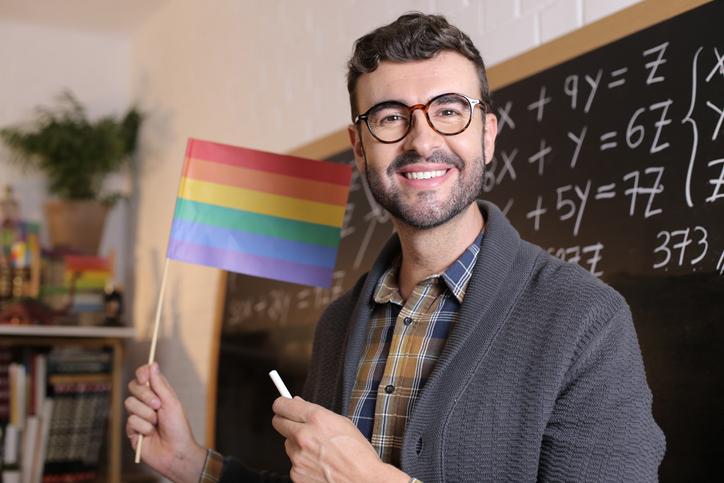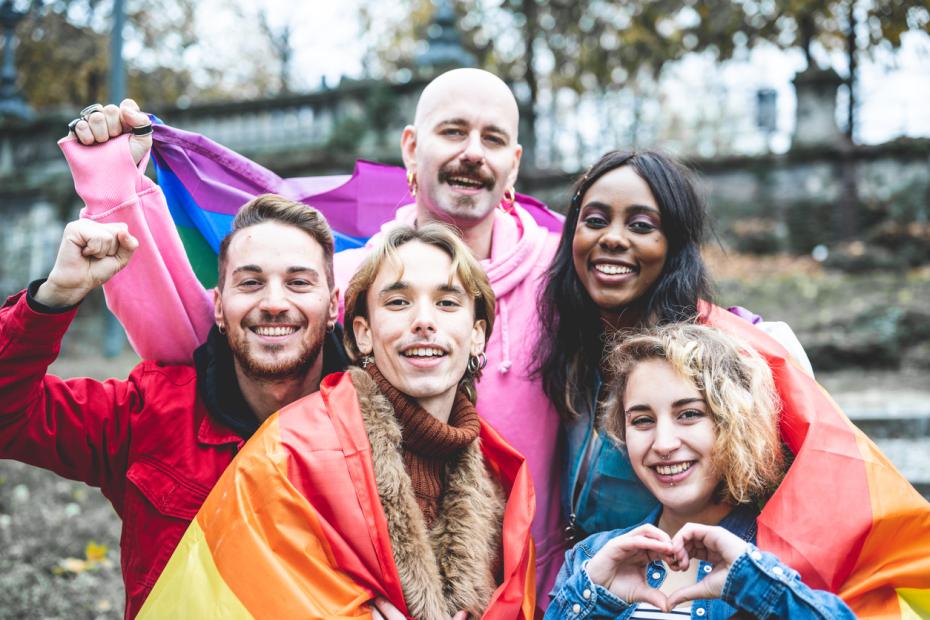As we celebrate the International Day Against Homophobia, Biphobia, Interphobia and Transphobia (IDAHOBIT day), it’s always useful to think of our roles as educators in making people feel like they belong, welcome and supported (yet challenged). At the same time, exposure to the fabled “other” also offers much pedagogically. Let’s thus embrace LGBTIQ+ possibilities in the classroom, partly by inclusion and partly by adding a sprinkle of queer thinking in education. As such, I present here five simple ways to make your classroom more LGBTIQ+ friendly.
1. Use pronouns
This technique is one I only started recently doing myself. As a (white and cisgender) gay man, I knew that clearly marking pronouns was very important for some people, but I assumed the burden was on them to be explicit about their pronouns – and then I would respect that choice and deploy it (even if I still get it wrong sometimes, but keep trying).
I thought this was the appropriate response until a student told me something important: that they felt exposed when they were the only ones being explicit about their pronouns – and felt uncomfortable even mentioning pronouns because they did not want to be singled out. This simple moment of being seen by the entire peer group on the very first day of class affected their entire course, and the student participated a lot less in class and interacted less with their peers.
- Creating an environment where staff and students feel comfortable sharing their pronouns
- What LGBTQ+ allyship means in academia
- THE podcast: career advice, LGBTQ+ in the academy and public speaking tips
It has been easy enough, when doing a round of introductions, to indicate my own pronouns and ask every student to do the same. If there is no round of introductions for the entire class, just state your own pronouns, and encourage people to tell you what their pronouns are when they reach out to you.
Besides making LGBTIQ+, particularly trans and gender diverse, students feel more accepted, there is also broader pedagogical value to deploying pronouns. It sets a tone for comfort in self-expression in the classroom, telling the entire cohort that being different in identity or opinion is not only acceptable but actively encouraged. It opens the door for all students to engage more freely with ideas – and each other.
2. Note days of significance
There are many calendars out there that note days of significance to LGBTIQ+ people (they will vary a bit from country to country, so check a local version). Marking those days can be as easy as the automatic “happy holidays” many of us shout out at the end of the last class in December. Noting those dates makes minority identities more visible (the reason for those days in the first place) and, consequently, states publicly that it’s OK for people with those identities to be on campus. It’s also a conversation starter for students after class, raising more awareness and knowledge about different ways of being and expressing oneself.
Most of us already do a version of this acknowledgement with International Women’s Day or any range of religious holidays. Marking other days as well makes the world around us more inclusive, bigger. It also drives a deeper pedagogical lesson about how we organise ourselves as societies or groups within a discipline. We come together, we fight for a common cause, we (hopefully) make the world around us better.
3. Use narrative (and humour)
The use of narrative is something that queer theory folks do a lot. The idea is to sharpen the stakes of the knowledge being conveyed by grounding the rationales and impacts of our decisions about power, science, identity. The practice partly relates to the political act of “coming out” as a tactic to lower discrimination (after all, it is always easier to hate the invisible bogey person than to hate your colleague, friend or relative). In education, it can be a powerful tool.
Narrative allows us to be clearer about why knowledge matters, without having to chalk it up to buzzwords such as “employability” and “job-readiness”. It can make the pursuit of knowledge useful on a more fundamental, human level.
Always try to contextualise what you say in class with stories and anecdotes. And when the time comes to make the broader point drawn from the first anecdote, add another one to the mix to problematise reliance on only one example – and then get to the general point.
This technique is of course not unique to queer thinking. It’s grounded more broadly on pedagogy, empathy and an ethic of care. But it is certainly something we can always sharpen in our practices (and a dose of caustic humour, which is a very LGBTIQ+ cliché, always goes well in my experience).
4. Encourage students to speak from their own perspectives
Another important thing to do, connected to narrative, is encourage students to connect what they are learning to their own experiences. In other words, to take the narrative technique back to them.
Again, this mode of pedagogy is not unique to queer thinking (in many ways, it is basic pedagogical and epistemological theory), but there is something to the way LGBTIQ+ people often do this, borrowing from the feminist tool of consciousness-raising. Narrative from a student’s perspective becomes not just a means to ground the knowledge from the subject, it can also be a way for the student to learn more about themselves in the process and become a fuller version of the human being higher education is meant to help them realise.
5. Show that respect does not mean silence or agreement
Lastly, thinking about LGBTIQ+ people, and the history of the movements in this wondrous alphabet soup, reminds us that respect does not mean acquiescence. LGBTIQ+ folks fight among the letters, and even within the letters, all the time. But we still (do our best to) find a way to come together in the end, because we understand that kinship is the key to thriving, that allyship is important and necessary and that our individual feelings are in many ways secondary to becoming a better society.
As we work out how higher education’s mission to challenge meets the mission to be a safe space for growth, the ability to disagree creates a safe and nurturing space. LGBTIQ+ people and history show us how we can get there, or at least try.
This year’s theme for IDAHOBIT day is “united in diversity”. It reminds us of the many ways in which we depend on each other, and how we can find and offer allyship elsewhere. In higher education, it reminds us that, if our students and even we as educators are to grow, we cannot do it on our own, and that there is a lot to be learned by looking more closely at the many colours of the rainbow.
Lucas Lixinski is a professor at the Faculty of Law and Justice, UNSW Sydney.
If you found this interesting and want advice and insight from academics and university staff delivered direct to your inbox each week, sign up for the THE Campus newsletter.




comment